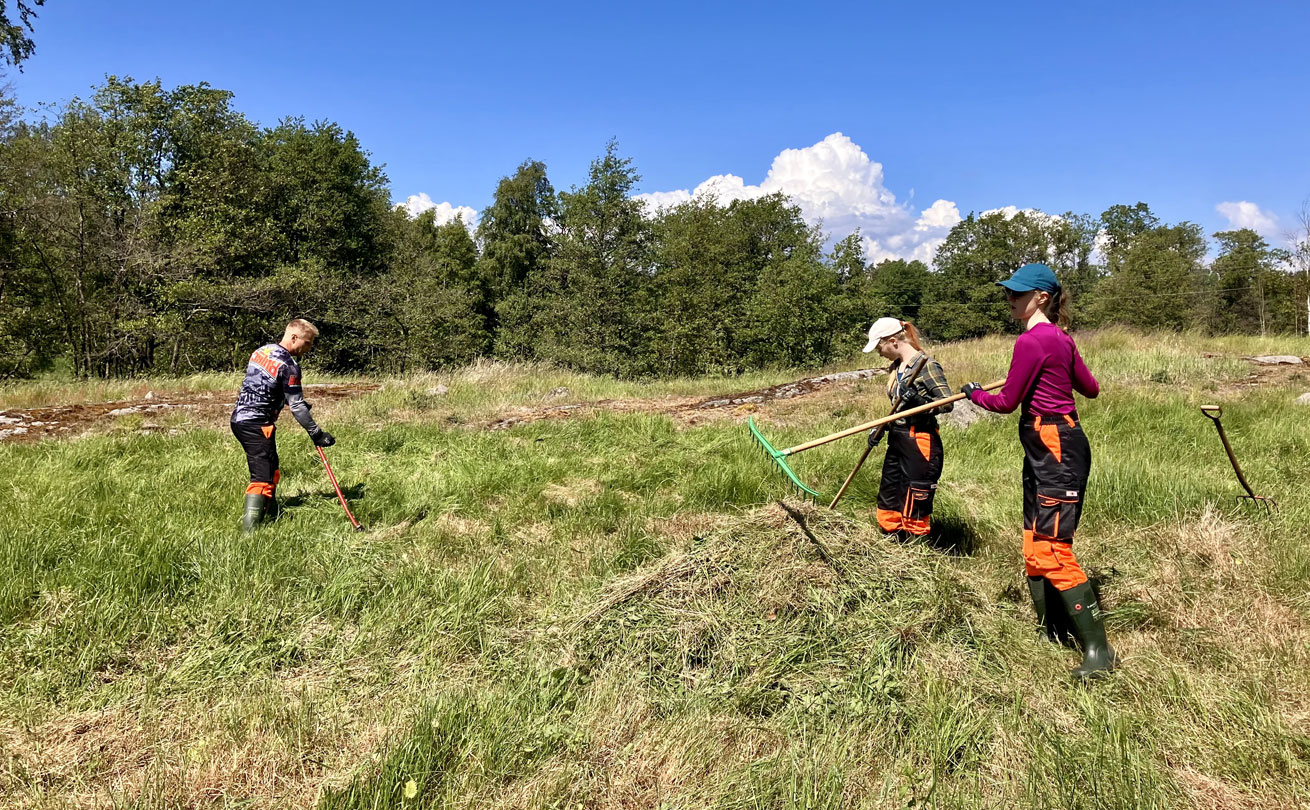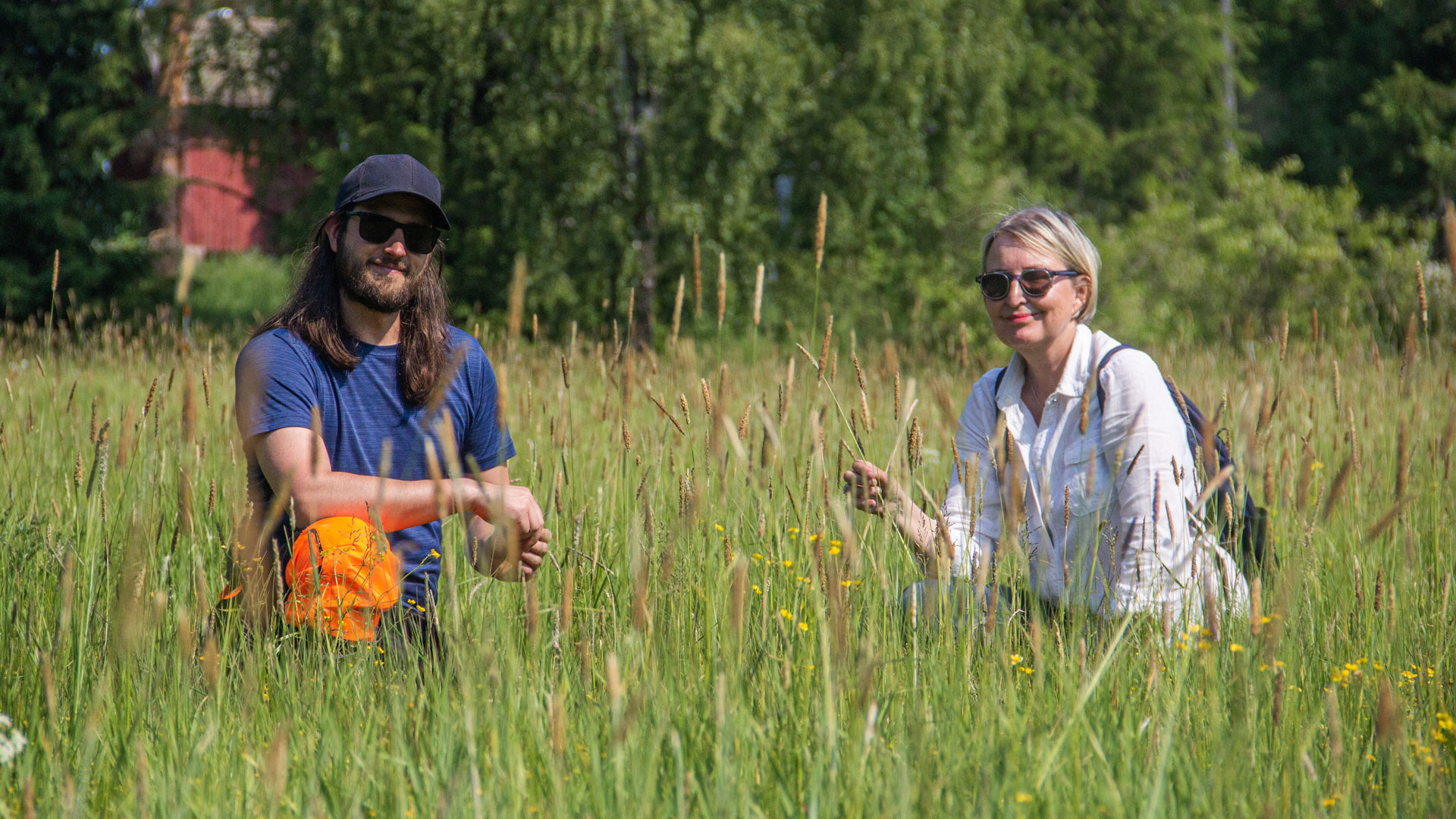Turn your backyard into a haven for pollinators – biodiversity protects all of us
More about the topic
Nature can be protected by promoting wildflowers and fighting invasive species. One way to help is to let your lawn grow wild," says Matti Saarni, an expert from the Finnish Association for Nature Conservation.
Diverse nature is the foundation of all life. Plants, animals and microbes in the soil form complex symbiotic chains, where each organism has its place.
Bees, butterflies and other insects are needed to pollinate the plants that we humans use as food. A diverse ecosystem provides protection against pests and diseases.
"The more species, the better the ecosystem is able to function and adapt to extreme phenomena," says Matti Saarni, Nature Restoration Coordinator at the Uusimaa district of the Finnish Association for Nature Conservation.
Everyone can participate in maintaining biodiversity in their own back yard. Even small actions – or lack thereof – have a great impact on how we can protect our local nature.
Instead of a lawn, having a backyard of wildflowers is better for pollinators. One option is to leave parts of the yard untouched to let wildflowers bloom in peace.
"Leaving even a small section to nature helps. If the yard has a lawn, a part of it could be allowed to grow into a meadow area by leaving it uncut," says Saarni.
Preventing unwanted stowaways in the garden
Saarni recommends choosing native species of plants instead of foreign ornamental plants for the garden.
"Many people don't realise that their garden may be home to plants that have been classified as invasive species. They can escape into local nature and spread uncontrollably," says Saarni.
For example, the lesser periwinkle (Vinca minor), with its pretty blue flowers, is popular in gardens as groundcover, but it can spread rapidly in the wild and smother native plants.
In his work, Saarni spends time in nature and looks for traditional rural biotopes around the Uusimaa region, such as meadows and pastures with exceptionally diverse species. He constantly encounters plants that have spread from gardens into traditional biotopes and threaten native species.
One of the worst invasive species is the garden lupine, which suffocates other plants and causes eutrophication.
"Lupines alter the nutrient balance of the soil, making it incompatible with plants that thrive in the nutrient-poor conditions of traditional biotopes," Saarni explains.
Fight invasive species the right way
Lupines can be prevented from spreading with the right techniques, but this requires perseverance. The plants, including roots, should be dug out as early in the spring as possible and disposed of as burnable mixed waste. Lupine flowers should be collected in a garbage bag before they have the chance to spread seeds, and disposed of as mixed waste.
"Lupines are sturdy plants and will grow in even the most barren conditions. Cutting the plants is not enough, as the roots will quickly sprout new growth," says Saarni.
Other common invasive species include the Himalayan balsam, hedge bindweed and beach rose. Their prevention follows the same principles as lupines. More instructions are available at vieraslaji.fi.
Garden waste should never be dumped into nature or at the edge of a forest, something Saarni has sometimes unfortunately witnessed while being out and about in nature.
"Many waste collection stations, such as Rosk'n Roll in the Uusimaa region, accept invasive species free of charge," Saarni notes. His hope is that Sortti stations in the Helsinki Metropolitan Area will soon also accept invasive species without charge.
Herbicides should never be used in the garden, not even to destroy harmful invasive species.
"Herbicides and pesticides are efficient in killing everything, including pollinators and other useful insects. Instead of helping biodiversity, they have the exact opposite effect," Saarni stresses.
He also points out that robot lawnmowers can be fatal to hedgehogs, which play a valuable role in the garden ecosystem.
The Ketosirkka project combats biodiversity loss
Matti Saarni is the coordinator of the Ketosirkka project at the Uusimaa district of the Finnish Association for Nature Conservation. The aim of the project is to preserve unique traditional rural biotopes and prevent biodiversity loss.
"Traditional biotopes are the most endangered natural environments in Finland. Of the total 42 types of traditional biotopes, 40 are classified as critically endangered and the other two as endangered," Saarni explains.
Traditional rural biotopes have been formed as the result of traditional agriculture, with pastures and meadows for grazing and mowing. Nature conservation tries to imitate old ways of using the land, which involves mowing and raking vegetation, cutting trees and preventing invasive species.
This summer, critically endangered traditional biotopes will be managed in the Ketosirkka project, from rocky clearings to traditional meadows across the Uusimaa region, from Raasepori to Loviisa.
"Thanks to the conservation efforts, traditional species of flowers, butterflies and rarities have started to make their return," Saarni rejoices.
New sites all across Uusimaa
 This year, the project has been able to hire a total of 17 nature conservation workers for field work. Photo: Jaana Patrakka.
This year, the project has been able to hire a total of 17 nature conservation workers for field work. Photo: Jaana Patrakka.
OP Uusimaa has been the main partner of the Ketosirkka project for three years. Thanks to the partnership, the project has doubled the number of conservation sites, with several new locations to be added this year in Loviisa, Sipoo and Järvenpää, among others. The project has hired 17 nature conservation workers for this summer's field work.
"In practice, our work starts with identifying sites based on geospatial data and old records. I look at satellite images, visit the location and look for sites where nature is in need of assistance. After this, we apply for permits and plan the conservation measures," Saarni explains.
The Ketosirkka project works in close cooperation with the ELY Centre for the Uusimaa region and Metsähallitus. Cities and municipalities are also encouraged to identify sites with natural values and take up conservation efforts. Sites that need conservation are also found on privately owned land.
"People are sometimes afraid that conserving nature on their land means forced preservation and restrictions. This is not the case, however, as our only goal is to look after these invaluable natural environments and help improve biodiversity," Saarni stresses.
